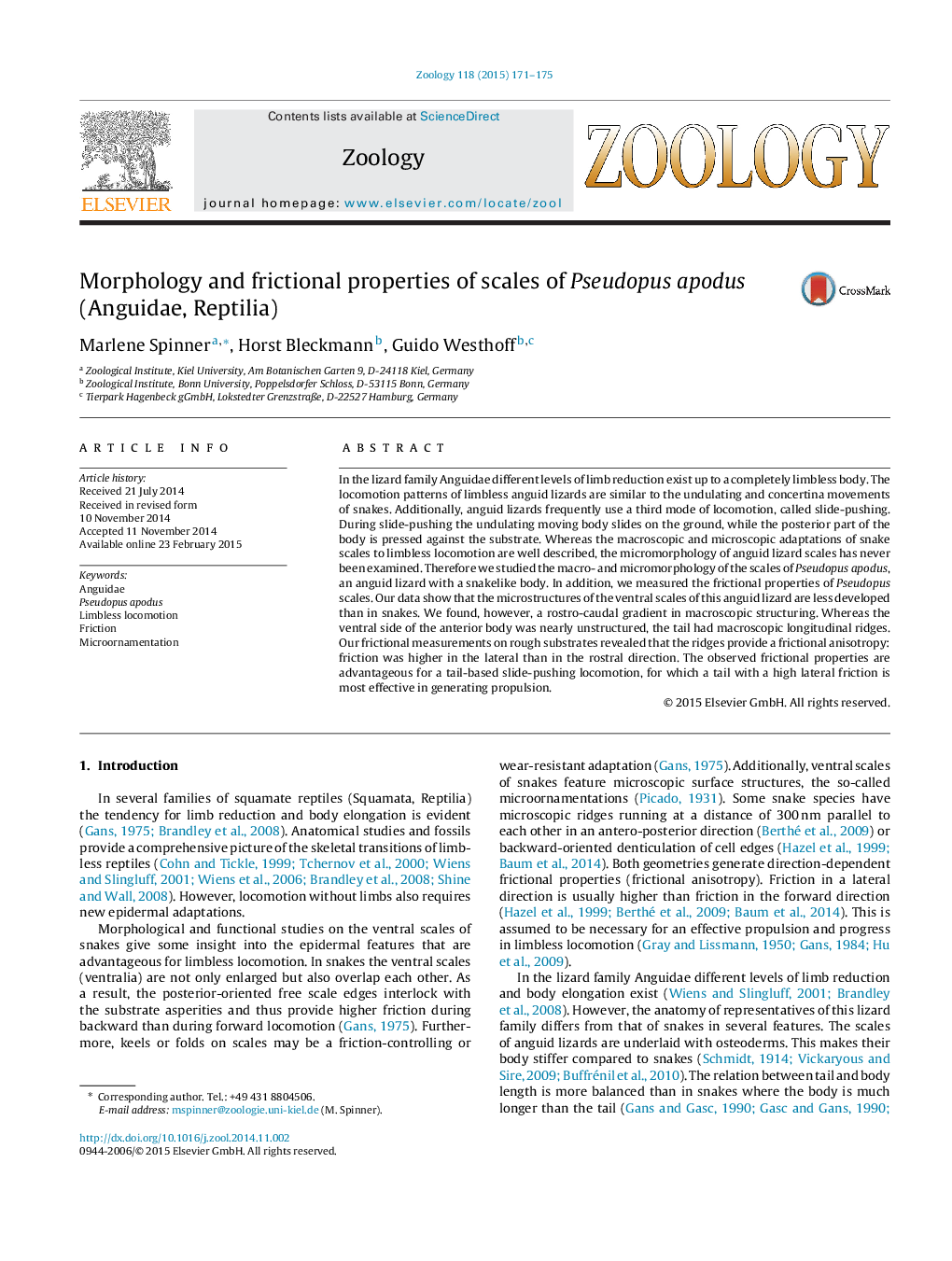| کد مقاله | کد نشریه | سال انتشار | مقاله انگلیسی | نسخه تمام متن |
|---|---|---|---|---|
| 2791108 | 1154844 | 2015 | 5 صفحه PDF | دانلود رایگان |

In the lizard family Anguidae different levels of limb reduction exist up to a completely limbless body. The locomotion patterns of limbless anguid lizards are similar to the undulating and concertina movements of snakes. Additionally, anguid lizards frequently use a third mode of locomotion, called slide-pushing. During slide-pushing the undulating moving body slides on the ground, while the posterior part of the body is pressed against the substrate. Whereas the macroscopic and microscopic adaptations of snake scales to limbless locomotion are well described, the micromorphology of anguid lizard scales has never been examined. Therefore we studied the macro- and micromorphology of the scales of Pseudopus apodus, an anguid lizard with a snakelike body. In addition, we measured the frictional properties of Pseudopus scales. Our data show that the microstructures of the ventral scales of this anguid lizard are less developed than in snakes. We found, however, a rostro-caudal gradient in macroscopic structuring. Whereas the ventral side of the anterior body was nearly unstructured, the tail had macroscopic longitudinal ridges. Our frictional measurements on rough substrates revealed that the ridges provide a frictional anisotropy: friction was higher in the lateral than in the rostral direction. The observed frictional properties are advantageous for a tail-based slide-pushing locomotion, for which a tail with a high lateral friction is most effective in generating propulsion.
Journal: Zoology - Volume 118, Issue 3, June 2015, Pages 171–175